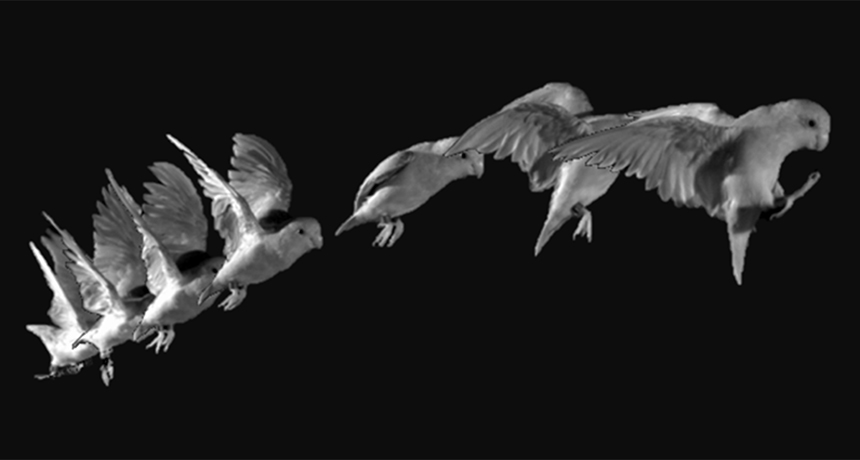Petite parrots provide insight into early flight

The biomechanics of parrotlet hops has implications for better understanding the evolution of flight and could help engineers design better flight robots.
Diana Chin/Lentink Lab

The biomechanics of parrotlet hops has implications for better understanding the evolution of flight and could help engineers design better flight robots.
Diana Chin/Lentink Lab